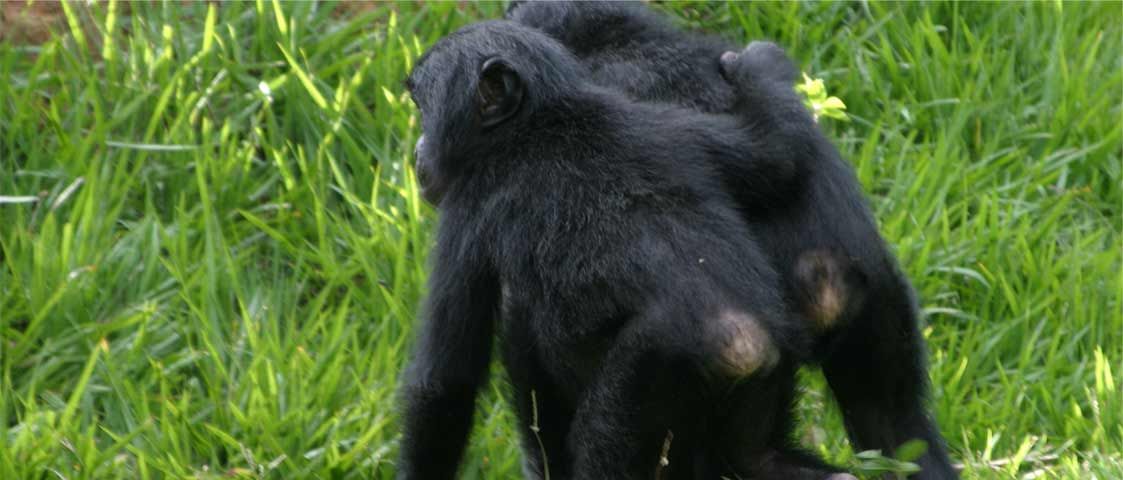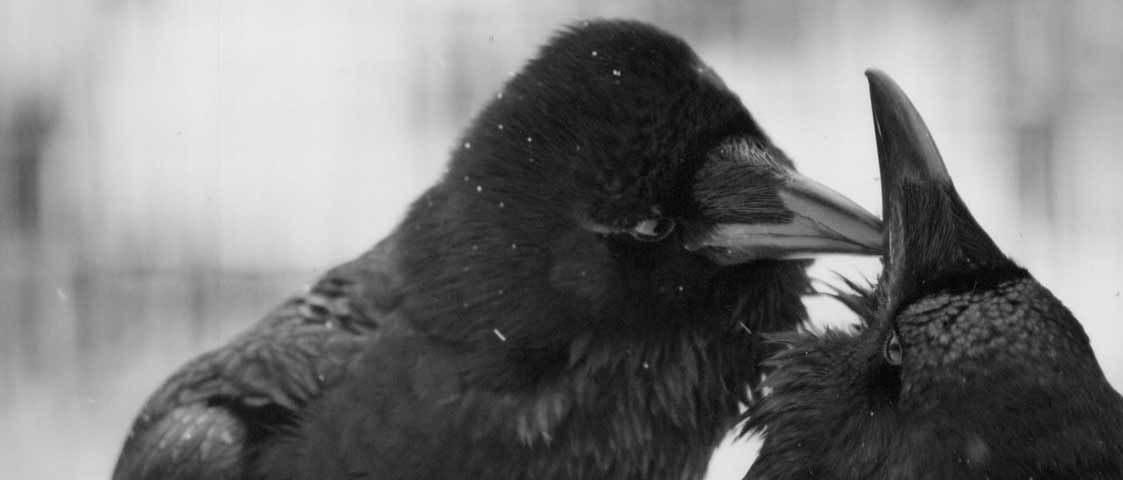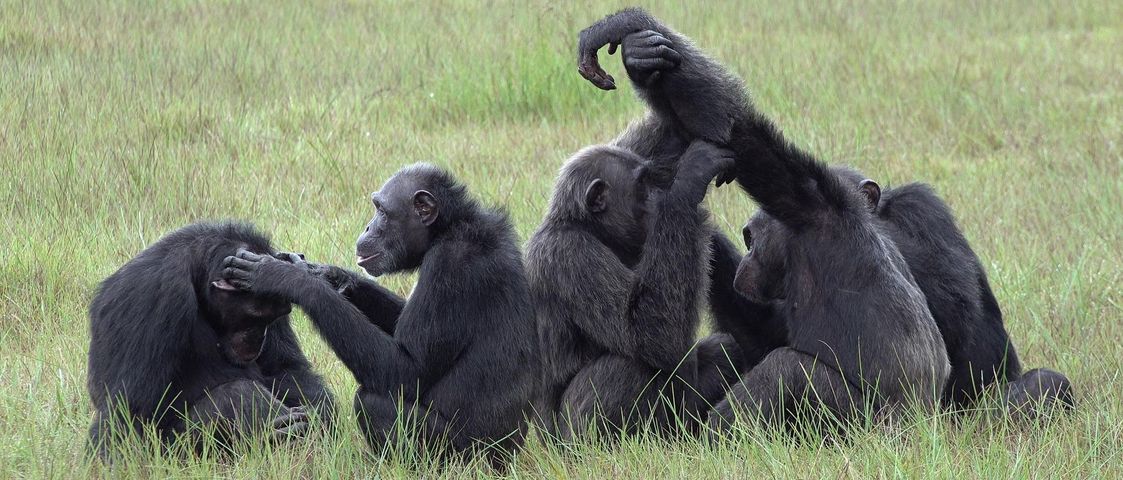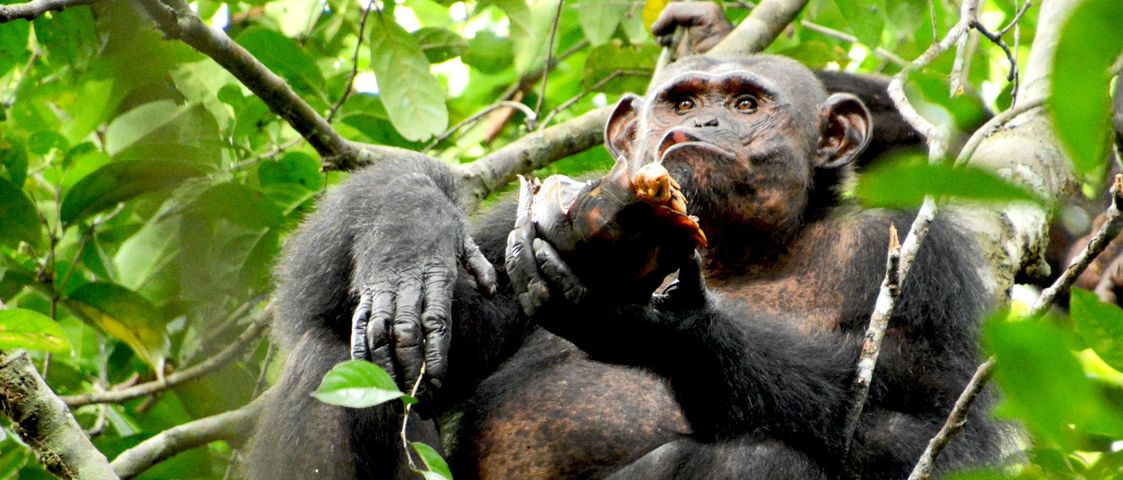Studyprojects
The mentality of apes by Wolfgang Köhler: One century later’
Re-reading and re-evaluating the seminal book of Wolfgang Köhler and linking it to our current knowledge on the cognition of great apes
Wolfgang Köhler (21 January 1887– 11 June 1967) was a German Psychologist and phenomenologist. In 1913, he left his position at the Psychological Institute in Frankfurt and became the director of the Prussian Academy of Sciences Anthropoid Research Station on the island of Tenerife, Canary Islands. He worked there for six years, during which he wrote his pioneering book “The Mentality of Apes” (1917), focusing on the cognitive aspect of problem solving. Köhler carried out behavioural experiments with four chimpanzees (Pan troglodytes), Chica, Grande, Konsul, and Sultan, involving for instance retrieving bananas when positioned out of reach. He showed that the chimpanzees stacked wooden crates to use as makeshift ladders, to retrieve the food, or if the bananas were placed on the ground outside of the cage, they used sticks to lengthen the reach of their arms. Köhler concluded that these results provided evidence for ‘insight’ and planning in chimpanzees. He thereby challenged the hypothesis of Edward Thorndike (American psychologist), who had claimed that trial-and-error learning is the basis of all animal learning.
Köhlers’ research showed that the intellectual gap between humans and chimpanzees was much narrower than previously thought and was revolutionary when originally published in 1917 in German. However, it was largely ignored for decades because it violated the traditional view that animal behavior and cognition is simply the result of instinct or conditioning.
In the first part of the study project ‘The mentality of apes by Wolfgang Köhler: One century later’ (WS 2022/2023, SS 2023), we will re-read the original book and re-evaluate the findings and its influence on studies of animal ‘insight’, ‘tool-use’ and ‘future planning’. In the second part (WS 2023/2024; SS 2024), we will write and publish an edited version with linkages and discussions of our current knowledge on great apes’ ‘insight’, ‘tool-use’ and ‘future planning’.
Like us, chimpanzees (Pan troglodytes) are highly social animals, care for their offspring for years and can live to be over 50 years of age. With bonobos (Pan paniscus), chimpanzees are our closest living relatives: we share about 98% of our genes. Chimpanzees have become the most predominant referential model for the evolution of human cognition. Research on wild communities originated in the 1960ies with pioneers such as Jane Goodall and Toshisada Nishida who set up the first long-term field sites in Tanzania (Goodall, 1986; Nakamura, Hosaka, Itoh, & Zamma, 2015).
However, today chimpanzees are critically endangered with currently only 172.700 to 299.700 individuals left. A recent study showed that the presence of researchers and research camps positively impacts on wildlife stock and hence the protection of endangered species (Köndgen et al., 2008). For instance, more research and thus presence in the Taï National Park (Ivory Coast) resulted in higher densities of chimpanzees and lower poaching activities (Köndgen et al., 2008). Furthermore, raising awareness in the local communities and internationally via theater groups (e.g. https://www.wildchimps.org/projects/theater.html), and the social media are fundamental means to increase conservation efforts.
The study group ‘What can Cognitive Scientists do to save chimpanzees?’ will further act by creating a think-tank to raise awareness for chimpanzees living in the Loango National Park in Gabon (https://www.comparative-biocognition.de/1000pan/fieldsites). We will develop a new app or social media formats (e.g. youtube channel) to provide the public with fun tools to learn about and increase the awareness and protection of chimpanzees.
Evaluation of participation:
Interdisciplinary course participants will be evaluated based on their presentation and the shared interim report.
Study project participants will be evaluated based on the final presentation of their sub-projects and the shared project report at the end of the second semester.
There has been a long-standing interest to understand the meaning and function of animal vocalizations, as well as the structures which determine how animals communicate (Darwin, 1871). In human languages, a phoneme is the smallest meaningful unit of sound and syntactic rules governing sentence formation and sematic rules guiding assignment of meanings to sentences play a crucial role. However, what are the smallest components of complex animal vocalizations? According to which underlying principles are they organized within the respective communication systems to make the communication intelligible? What can we infer about their underlying cognitive processes from those underlying rules?
The majority of comparative research into language origins has been based on traditional methods such as behavioural observations and play-back experiments (Seyfarth et al. 1980). The large amount of data and variations in the vocalizations as well as subjectivity make hand analysis challenging.
Recently, machine learning has advanced many different scientific fields that impact our daily lives, such as automated speech recognition and computer vision. Its application is, however, still extremely underdeveloped in the fields of Animal Behaviour, Bioacoustics, and Comparative Psychology.
The goals and the work packages of the study project
The interdisciplinary study project of Machine Learning Meets Animal Communication aims to fill this gap by developing parts of a user-friendly framework that supports the extraction of detectable principles within the vocal repertoire of one of our closest living relatives, the chimpanzee (Pan troglodytes):
The project is divided in 3 working packages, 2 deliverables and will be assessed via presentations and a final report. (The following working packages and deliverables serve as a guidance to the topic. Participating students can adjust and develop the final focus.
Early cognitive and communicative experiences of young children differ dramatically in relation to their socioeconomic background. For example, an average child on welfare has half as much experience per hour (616 words/hour) as an average working-class child (1,251 words/hour) and less than one-third that of an average child living in a professional family (2,153 words/hour) (Hart & Risley 2003). These differences in early language experience result in a “vocabulary gap” of around 30 million words between children from the wealthiest and poorest families as well as differences in tackling the cognitive challenges of their daily environment.
Reading picture- and storybooks is a great way to promote children’s early language skills. Parent-preschooler reading is related to language growth, emergent literacy, and reading achievement (Bus, IJzendoorn, & Pellegrini 1995). However, more recent studies found that how one reads a book to children can influence their learning achievements (Brownell et al. 2013; Read 2014).
The study group ‘what is Waza thinking’ will act by developing a new book format to provide parents with a fun tool to motivate and enhance the cognitive development of their children.






